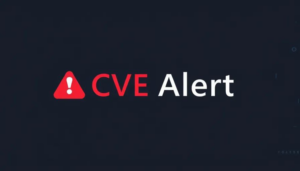CVE Alert: CVE-2025-20337 – Cisco – Cisco Identity Services Engine Software
CVE-2025-20337
A vulnerability in a specific API of Cisco ISE and Cisco ISE-PIC could allow an unauthenticated, remote attacker to execute arbitrary code on the underlying operating system as root. The attacker does not require any valid credentials to exploit this vulnerability. This vulnerability is due to insufficient validation of user-supplied input. An attacker could exploit this vulnerability by submitting a crafted API request. A successful exploit could allow the attacker to obtain root privileges on an affected device.
AI Summary Analysis
Risk verdict
Critical risk: unauthenticated remote code execution with active exploitation in the wild; treat as priority 1.
Why this matters
An attacker gaining root on Cisco ISE undermines identity services, policy enforcement, and access controls across the network, enabling persistence, data exfiltration, and lateral movement to other connected systems. In large or multi-site deployments, a single compromised ISE node can cascade to multiple services and trust relationships.
Most likely attack path
Exploitation requires no credentials and no user interaction, delivered over the network via crafted API requests. With scope widened, successful code execution could allow attacker compromise of the host and potential lateral movement within the ISE trust domain or adjacent management assets.
Who is most exposed
Organizations running on-premises Cisco ISE or ISE-PIC with API surfaces reachable from less-trusted networks (including internet-facing or poorly segmented management networks) are most at risk—common in large campuses, data centers, and multi-site deployments.
Detection ideas
- Unauthorised, crafted API calls to ISE endpoints from external networks.
- sudden spikes in CPU/memory or unusual root-level process activity on the ISE appliance.
- Logs showing privilege-escalation-like actions or unexpected file/system changes.
- Anomalous authentication policy events or service disruptions across ISE components.
- IDS/IPS alerts for exploit pattern activity targeting ISE APIs.
Mitigation and prioritisation
- Apply fixed software release; upgrade to vendor-recommended version immediately.
- Restrict API exposure: segment management interfaces, enforce access controls, and block unauthenticated access from untrusted networks.
- Implement compensating controls: network firewall rules, VPN-only API access, and enhanced monitoring on ISE.
- Schedule and test patch deployment in a controlled window; verify post-patch stability.
- If KEV and exploitation state are confirmed, treat as priority 1; rotate credentials and audit related configurations after patching.
A considerable amount of time and effort goes into maintaining this website, creating backend automation and creating new features and content for you to make actionable intelligence decisions. Everyone that supports the site helps enable new functionality.
If you like the site, please support us on “Patreon” or “Buy Me A Coffee” using the buttons below
To keep up to date follow us on the below channels.


